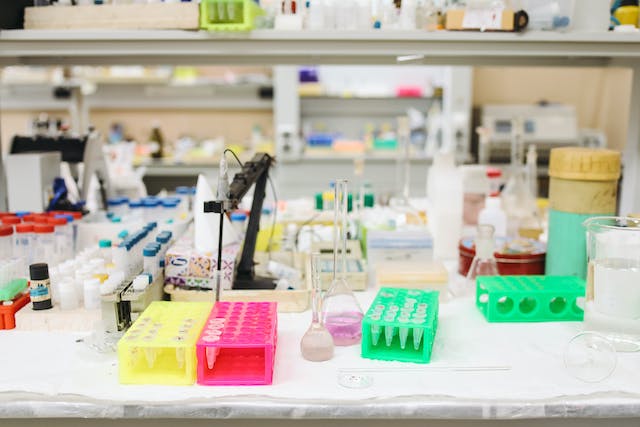The field of scientific research, marked by notable advancements and the resolution of intricate challenges, harbors an often-overlooked danger. Data from the U.S. Chemical Safety and Hazard Investigation Board (CSB) for the first quarter of 2023 shows a substantial increase in reported chemical incidents, surpassing figures from the same period in the previous two years.
These statistics are a grave reminder to balance the thrill of discovery with the paramount importance of safety. Therefore, it’s imperative to educate ourselves with comprehensive knowledge and procedures to proficiently navigate this elaborate domain. Keep reading for four critical protocols that can allow you to handle biological materials like a pro.
Decontamination: Ensuring A Pristine Biological Environment
In the aftermath of biological research or a similar process, decontamination plays a pivotal role, meticulously removing all vestiges of previous biological activities. This process involves a range of methods, including sterilizing instruments through autoclaving, employing robust chemical agents for surface disinfection, and utilizing ultraviolet radiation to purify various apparatus.
Critical to the decontamination process is the application of specific methodologies tailored to the nature of the biological threat encountered. For example, this precision is essential when using a single cell sorter. Thorough cleaning of this device is essential to prevent cross-contamination and ensure accurate results in subsequent experiments. Selecting an appropriate cleaning technique, whether it be heat, chemicals, or light-based, requires a deep understanding of the particular biological hazard involved.
Furthermore, proficiency in decontamination practices is imperative. Rigorous training and mastery of these techniques are essential for ensuring that all potential microbial adversaries are eradicated. Employing these sophisticated cleaning methods is crucial for maintaining the integrity of the biological environment, thereby effectively averting any contamination.
Personal Protective Equipment: Essential For Biological Safety
In biological safety, personal protective equipment (PPE) is an essential line of defense. This gear, comprising lab coats, gloves, eye protection, and face masks, is crucial in forming a barrier against biohazards, thereby playing an integral role in ensuring health and safety.
Choosing the right PPE is vital and should be guided by the type of hazard present. For handling low-risk substances like mild allergens, basic PPE such as disposable gloves and safety glasses may be adequate. Conversely, environments with high-risk pathogens require more comprehensive protective equipment, including full suits and Class II biological safety cabinets, to maintain a safe working atmosphere.
In the context of advanced biological research, heightened safety measures are required. Isolating individual cells within a biological safety cabinet requires strict procedures. In certain cases, adding an extra layer of containment, like an additional biological safety cabinet in a dedicated biosafety area, is a crucial safety measure.

Containment And Confinement: Ensuring Biological Safety
In biological sciences, the concepts of containment and confinement are critical, particularly when handling potentially dangerous microorganisms. It’s essential to avert the unintended release of bacteria from controlled environments, such as Petri dishes, to places where they might pose a health hazard.
The biological safety cabinet (BSC) is essential in this regard. It acts as an effective barrier, equipped with air filtration, splash guards, and containment features to keep microorganisms confined. Choosing the right BSC depends on the risk level of the biological agents involved: Class I for low risk, Class II for moderate risk, and Class III for high-risk situations, each providing different security levels.
However, containment strategies extend beyond the confines of the BSC. The use of secondary containers, designated workspaces, and rigorous waste management protocols are crucial in mitigating the risk of accidental release of these organisms. It’s important to label all materials clearly, handle sharp instruments with the highest level of caution, and manage waste with an awareness of the potential dangers it presents. Vigilance is of utmost importance in maintaining a secure and controlled environment, as any lapse could result in significant biological risks.
Sharps And Needles: Mitigating Associated Risks
Handling biohazards necessitates acknowledging the dangers associated with using needles and sharp instruments. Although vital in medical and lab settings, these tools carry a high risk due to their ability to cause injuries. Effective risk mitigation begins with reducing their usage wherever feasible.
Each needle and scalpel should be regarded with the utmost caution, akin to handling a potentially dangerous instrument. This approach includes employing them only when absolutely necessary, and ensuring their immediate and appropriate disposal in designated sharps containers following use. Practices such as bending, recapping, or casual handling of these items are strictly inadvisable and pose serious risks. It’s crucial to understand that even a minor accidental injury from such tools can escalate into a major health concern, altering the course of standard medical procedures.
Final Thoughts
Upon entering the laboratory, it’s essential to properly equip yourself with the necessary personal protective equipment and diligently prioritize safety. Be aware that substantial scientific advancements frequently emerge from fundamental safety practices.
Recognize that involvement in the field of biology transcends mere innovative discoveries. It includes a commitment to personal and communal protection. Safety should be regarded as the fundamental principle and essential component in building a distinguished career in the field of biological research and discovery.
